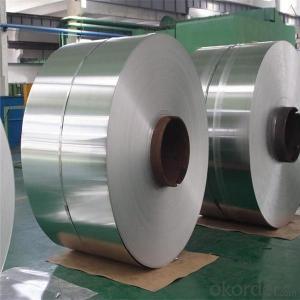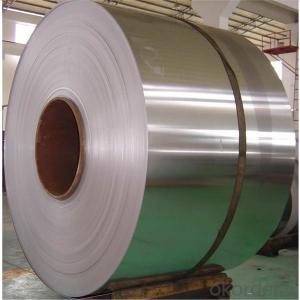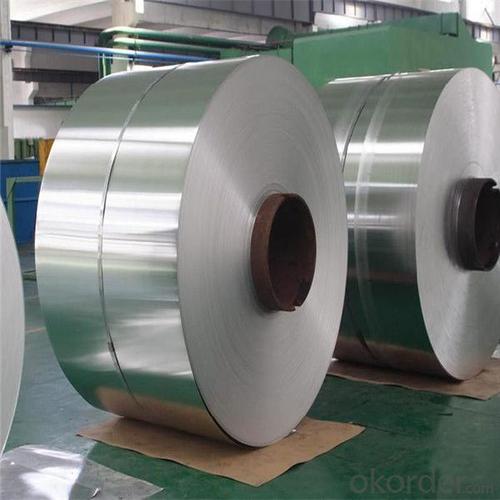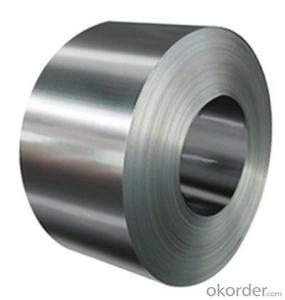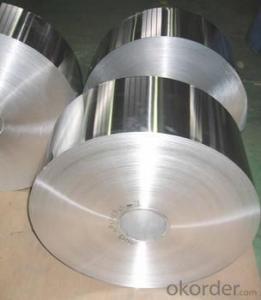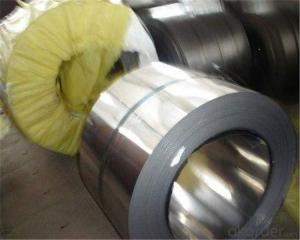201/304/430/ Stainless Steel Coil with good quality
- Loading Port:
- Shanghai
- Payment Terms:
- TT OR LC
- Min Order Qty:
- 5 m.t.
- Supply Capability:
- 24000 m.t./month
OKorder Service Pledge
OKorder Financial Service
You Might Also Like
Specification
stainless steel coil
1. Standard: ASTM A240, JIS G4304, G4305, GB/T 4237, GB/T 8165, BS 1449, DIN17460, DIN 17441
2. Grade: 200series&300series&400series
3. Thickness: 0.23mm-0.8mm
4. Diameter: 115-560mm
5. Length: according buyer require
6. Surface finish: 2B, BA, 8K, 6K, Mirror Finished, No1, No2, No4, Hair Line with PVC
7. Manufacture technology: cold drawn/cold rolled/hot rolled
1.Export Markets
Our target market is the international market. Every year we export most of products to countries like India, Pakistan, South Korea, Brazil, Australia, South Africa, Spain, Sri Lanka, russia,vietnam,Taiwan, Hong Kong, etc.
Type | Stainless steel coil (cold rolled ) |
Thinckness | 0.23mm-0.8mm |
Diameter | 115mm-560mm |
Quantity | as customer's requirement |
Finish | 2B,BA,HL,MIRROR,NO.1-NO.4,8K,and so on. |
Standard | ASME, ASTM, EN ,BS,GB,DIN, JIS etc |
Material | 201,202, 301,304,410,430,409 |
Application range | Foodstuff, Gas, metallurgy, biology, electron, chemical, petroleum, boiler, nuclear energy, Medical equipment, fertilizer etc |
Package | Standard export sea-worthy packing |
Delivery time | 7-15 days |
Quality | No.1 |
Productivity | 3000-4000 tons/month |
Note | We can produce other standard as the customers’ requirement |
2.Technical notes:
Surface Finish | Definition | Application |
2B | Those finished, after cold rolling, by heat treatment, pickling or other equivalent treatment and lastly by cold rolling to given appropriate luster. | Medical equipment, Food industry, Construction material, Kitchen utensils. |
BA | Those processed with bright heat treatment after cold rolling. | Kitchen utensils, Electric equipment, Building construction. |
NO.3 | Those finished by polishing with No.100 to No.120 abrasives specified in JIS R6001. | Kitchen utensils, Building construction. |
NO.4 | Those finished by polishing with No.150 to No.180 abrasives specified in JIS R6001. | Kitchen utensils, Building construction, Medical equipment. |
HL | Those finished polishing so as to give continuous polishing streaks by using abrasive of suitable grain size. | Building Construction. |
NO.1 | The surface finished by heat treatment and pickling or processes corresponding there to after hot rolling. | Chemical tank, pipe |
3.chemcial composition
Quality | Copper | NI | CU | Application |
PURE DDQ
| High | 1% | 1.4% | Sink, Deep drawing product |
DDQ | Middle | 1% | 1% | Pot, Bowl |
non-DDQ | Low | 0.5% | 0.5% | Plate, Bowl |
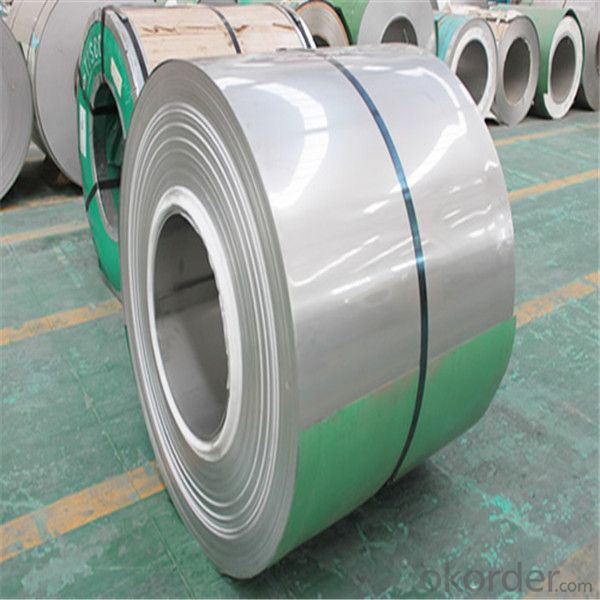

- Q: How do you measure the hardness of a stainless steel strip?
- Various methods can be utilized to measure the hardness of a stainless steel strip, with the Rockwell hardness test being the most commonly employed. This particular test involves the use of either a diamond cone or a hardened steel ball indenter to penetrate the surface of the strip under a specified load. Subsequently, the depth of the indentation is gauged, and a hardness value is determined according to the Rockwell scale. To execute the Rockwell hardness test, the stainless steel strip is securely positioned on a testing machine featuring a flat, smooth surface. The indenter is then brought into contact with the strip's surface, and an initial load is applied to establish the indenter's starting position. Following the establishment of the preliminary load, the final load is administered, causing the indenter to penetrate the surface to a specific depth. Once the load is eliminated, the resulting indentation is measured with the aid of either a microscope or an optical measuring device. The hardness value is determined by calculating the disparity between the depth of penetration under the final load and the depth of penetration under the preliminary load. Subsequently, this value is converted to a Rockwell hardness number through the use of a chart or a digital display on the testing machine. It should be noted that the Rockwell hardness test offers an assessment of the material's resistance to indentation, which indirectly correlates to its mechanical properties, including strength and toughness. Depending on the specific requirements and characteristics of the material, alternative methods like the Vickers or Brinell hardness tests can also be employed to measure the hardness of stainless steel strips.
- Q: What is the hardness of stainless steel strips?
- The hardness of stainless steel strips can differ based on various factors, including the specific grade of stainless steel, the applied heat treatment, and the method of manufacturing. Stainless steel is generally recognized for its hardness and strength, but different grades offer varying levels of hardness. Stainless steel strips are commonly produced in grades like 304, 316, 430, and 201, among others. These grades possess different compositions and properties that directly impact their hardness. Typically, stainless steel strips are hardened through cold rolling, a process that involves compressing and stretching the material to enhance its hardness and strength. To measure the hardness of stainless steel strips, the Rockwell scale is commonly used. This scale offers a standardized method for determining the material's resistance to indentation. The typical hardness values for stainless steel strips can range from approximately 70 HRB (Rockwell B scale) for softer grades to over 90 HRB for harder grades. It's worth noting that the hardness of stainless steel strips can also be further adjusted through additional heat treatment processes, such as annealing or tempering. These processes can either increase or decrease the material's hardness, depending on the desired characteristics and application requirements. In conclusion, the hardness of stainless steel strips can vary significantly depending on the specific grade, heat treatment, and manufacturing process. To determine the exact hardness for a particular application, it's essential to consult the material's technical specifications or seek advice from a metallurgical expert.
- Q: How do you prevent intergranular corrosion of stainless steel strips?
- To prevent intergranular corrosion of stainless steel strips, several measures can be taken. One of the most effective ways is to use stainless steel that has been properly heat treated and solution annealed, as this helps to eliminate carbide precipitation at grain boundaries. Additionally, utilizing low carbon grades of stainless steel can also reduce the susceptibility to intergranular corrosion. Another crucial step is to ensure proper cleaning and passivation of the stainless steel strips, which removes contaminants and promotes the formation of a protective oxide layer on the surface. Regular inspection and maintenance, such as avoiding exposure to aggressive environments and promptly repairing any damages or defects, can further help in preventing intergranular corrosion.
- Q: Can stainless steel strips be used in solar energy systems?
- Yes, stainless steel strips can be used in solar energy systems. Stainless steel is a popular material choice for various components in solar energy systems due to its excellent corrosion resistance, durability, and high-temperature resistance. These properties make it suitable for use in both indoor and outdoor solar installations. Stainless steel strips can be used in solar panels, mounting structures, frames, and brackets, as they provide structural support and ensure longevity in harsh weather conditions. Additionally, stainless steel's low thermal expansion coefficient allows it to maintain its shape and dimensional stability over time, making it an ideal material for solar energy systems.
- Q: Can stainless steel strips be used for kitchen appliances?
- Yes, stainless steel strips can be used for kitchen appliances. Stainless steel is a popular choice for kitchen appliances due to its durability, corrosion resistance, and sleek appearance. It provides a hygienic surface that is easy to clean and maintain. Stainless steel strips can be used to cover and protect various parts of kitchen appliances such as refrigerator doors, dishwasher panels, oven fronts, and range hoods. Additionally, stainless steel strips can be customized in terms of thickness, width, and finish to meet specific design requirements. Overall, stainless steel strips are a versatile and practical option for enhancing the aesthetics and functionality of kitchen appliances.
- Q: Are stainless steel strips suitable for water treatment plants?
- Yes, stainless steel strips are suitable for water treatment plants. Stainless steel is a corrosion-resistant material that can withstand exposure to water and various chemicals commonly used in water treatment processes. It offers excellent durability and longevity, making it a reliable choice for infrastructure in water treatment plants. Stainless steel strips can be used in various applications within these plants, such as piping, tanks, valves, and other equipment. Additionally, stainless steel is hygienic and easy to clean, which is essential in maintaining water quality. Overall, stainless steel strips are a suitable and beneficial material for use in water treatment plants.
- Q: Can stainless steel strips be used in transportation applications?
- Yes, stainless steel strips can be used in transportation applications. Stainless steel is known for its strength, durability, and resistance to corrosion, making it suitable for various components in transportation such as vehicle frames, exhaust systems, and structural parts.
- Q: How do stainless steel strips perform in extreme cold temperatures?
- Stainless steel strips perform exceptionally well in extreme cold temperatures due to their inherent resistance to corrosion, durability, and ability to maintain their mechanical properties.
- Q: Can stainless steel strips be used in the petroleum industry?
- Yes, stainless steel strips can be used in the petroleum industry. Stainless steel is known for its high resistance to corrosion, making it an ideal material for applications in the petroleum industry where exposure to harsh chemicals and corrosive environments is common. Stainless steel strips are often used in the construction of storage tanks, pipelines, and other equipment involved in the extraction, refining, and transportation of petroleum products. The durability and strength of stainless steel make it a reliable choice for withstanding the extreme conditions and pressures often encountered in the petroleum industry. Additionally, stainless steel's resistance to temperature fluctuations and its ability to maintain its structural integrity even in high-temperature environments further contribute to its suitability for use in this industry.
- Q: Can 111 stainless steel strips be coated with anti-corrosion paints?
- 111 stainless steel strips can indeed be coated with anti-corrosion paints. Stainless steel possesses remarkable resistance to corrosion; nonetheless, there are specific environments or situations where supplementary safeguarding measures may become necessary. Anti-corrosion paints are specifically formulated to furnish an additional shield against corrosion by establishing a barrier between the steel surface and its surrounding environment. The application of these paints can effectively impede rusting, staining, as well as various other forms of corrosion on stainless steel. It is crucial to guarantee the compatibility of the chosen paint with stainless steel and adhere to appropriate application procedures to attain the best possible outcomes.
Send your message to us
201/304/430/ Stainless Steel Coil with good quality
- Loading Port:
- Shanghai
- Payment Terms:
- TT OR LC
- Min Order Qty:
- 5 m.t.
- Supply Capability:
- 24000 m.t./month
OKorder Service Pledge
OKorder Financial Service
Similar products
Hot products
Hot Searches
Related keywords
